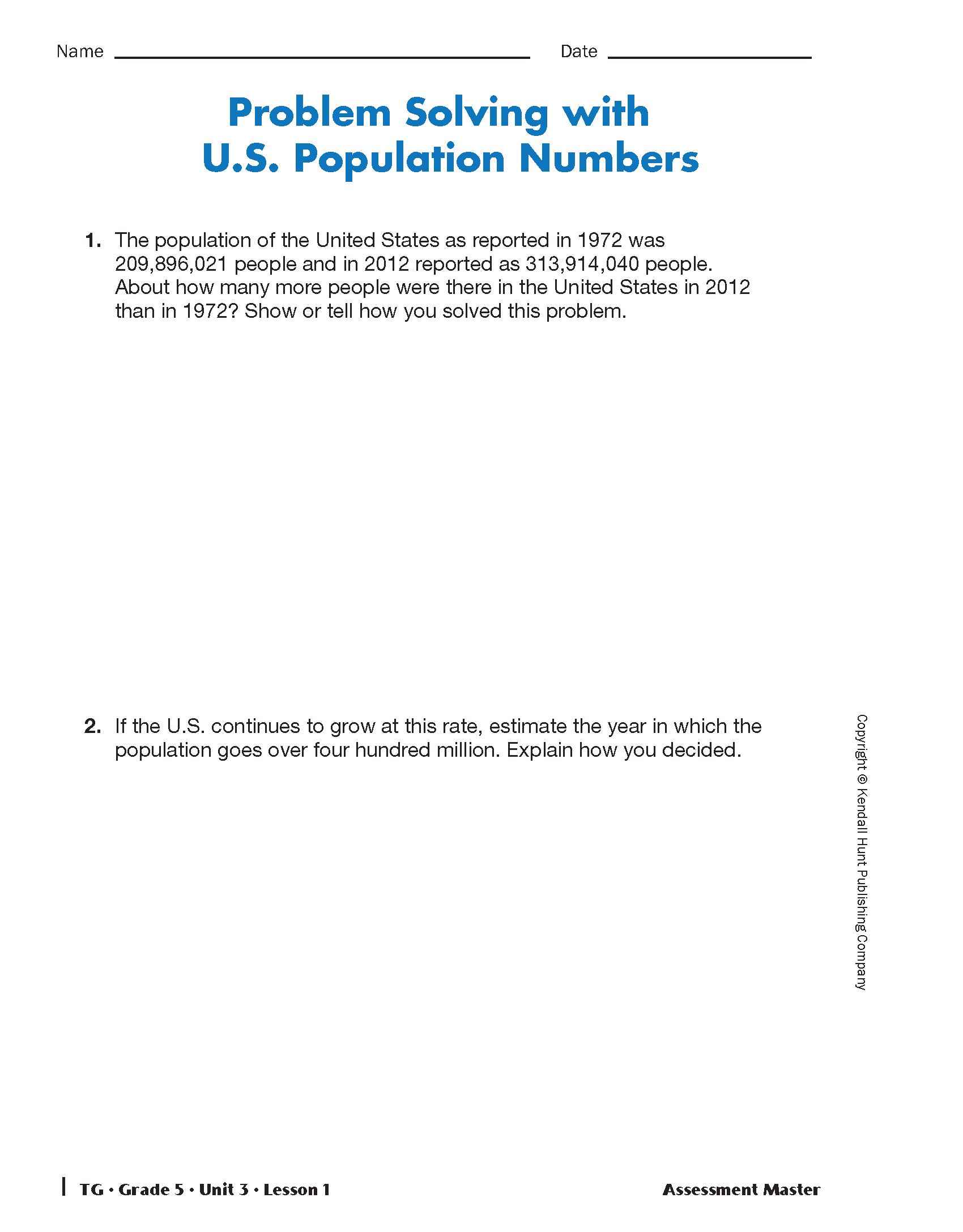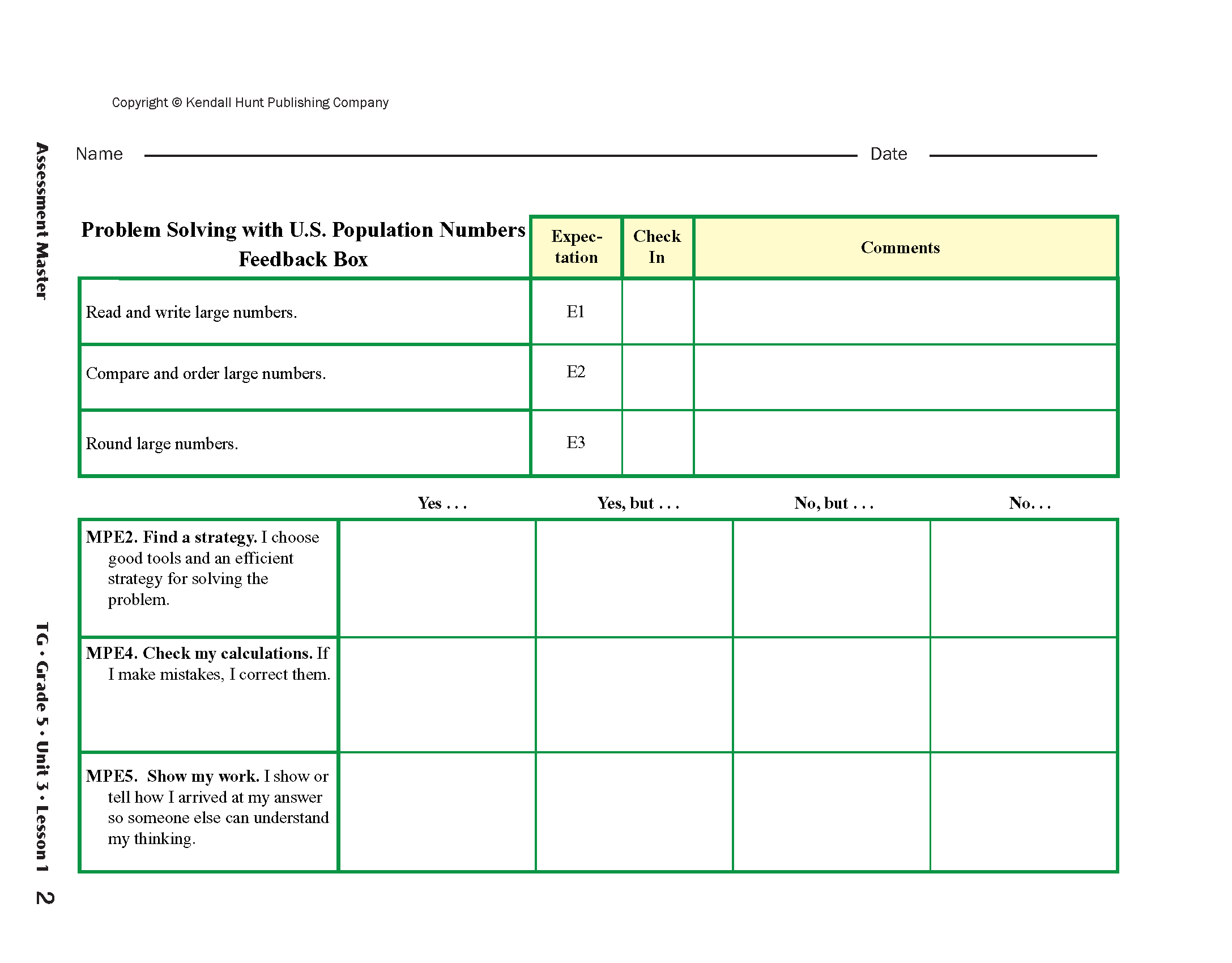Show Big Numbers
Est. Class Sessions: 2–3Summarizing the Lesson
Direct students back to the 2012 State Populations Table 1.
Tell them to use the information in the chart to solve the following state riddles:
Then direct students to the 2012 State Populations Table 2 in the Homework section of the Student Guide. Ask students to add each of the populations on this table to the Population Lines page from the Student Activity Book.
Ask these or similar questions about the information in the table:
Assign the Problem Solving with U.S. Population Numbers Assessment Master. In this assessment, students predict when the population of the United States will go over four hundred million. Before the students work on solving the problem, refer them to the Math Practices page in the Student Guide Reference section. Display the blank Master of the Math Practices page.
For this assessment, explain that students will focus on Math Practices 2, 4 and 5.
Ask students to discuss the following in pairs:
When students have completed their discussions, ask one pair of students to write their response for Math Practice Expectation 2 on the display of the Math Practices Expectations; a second pair of students can record their thinking for Math Practice Expectation 4, and a third pair can write their response to Math Practice Expectation 5. Sample responses are shown in Figure 6.
Once specific expectations for this problem are recorded, have students review the responses and add any other information that will be helpful. After this discussion, ask students to independently complete the Problem Solving with U.S. Population Numbers Assessment Master in the Teacher Guide.
Since Question 2 asks for an estimate, answers will vary. In the forty years from 1972 to 2012, the population of the U.S. increased by about 100,000,000. The population still has to increase by about another 100,000,000 to reach four hundred million. At the same rate of growth, it will take about another 40 years to increase by another 100,000,000. Forty years after 2012 will be 2052.
After students have independently completed the assessment, organize them so that they can share their solution and explanation with two other students. Ask students to pay particular attention to explaining how they chose a strategy (MPE2), how they checked that their answer made sense (MPE4), and how they explained their thinking so that others could understand how they arrived at their answer (MPE5).
















